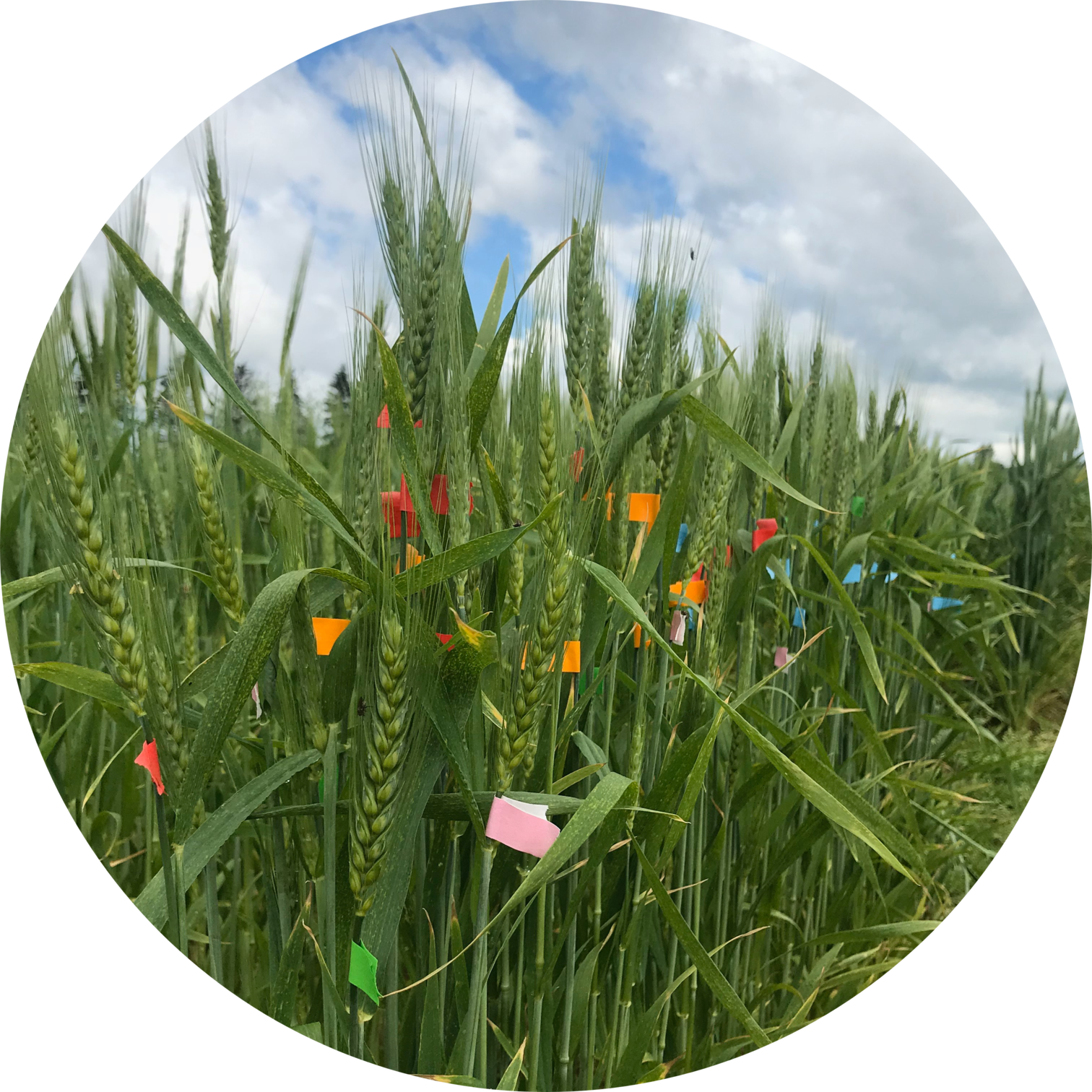Ellie Taagen

Genomics | Data Science | Ph.D.
PUBLICATIONS
Preprints
Check back soon!
Peer-reviewed manuscripts
-
Taagen, E., Jordan, K., Akhunov, E., Sorrells, M. E., Jannink, J. If it ain’t broke, don’t fix it: evaluating the effect of increased recombination on response to selection for wheat breeding (2022) G3. DOI
Simulating modifying recombination frequency & distribution and a GS wheat breeding program revealed that increased recombination shreds the LD and prediction accuracy, but can still be a valuable tool for discovery and harnessing the power of selection. Custom functions developed for advanced applications of AlphaSimR are available here. -
Taagen, E., Tanaka, J., Gul, A. & Sorrells, M. E. Positional-based cloning ‘fail-safe’ approach is overpowered by wheat chromosome structural variation (2021) The Plant Genome. DOI
A cautionary tale about structural variation and polyploidy, plus recommendations for more successful approaches to identifying causal variants. All of the data and scripts are open source and reporoducible - visit the repo here. -
Taagen, E., Bogdanove, A. J. & Sorrells, M. E. Counting on Crossovers: Controlled Recombination for Plant Breeding (2020) Trends in Plant Science. DOI
Opinion piece exploring the boundaries of homologous recombination (mitosis) or crossovers (meiosis) for increased control over the inheritance of preferred haplotypes. -
Taagen, E., Bogdanove, A. J. & Sorrells, M. E. Achieving Controlled Recombination with Targeted Cleavage and Epigenetic Modifiers (2020) Trends in Plant Science. DOI
Companion infographic brief to controlled recombination opinion piece, highlighting the advantages and challenges of this technology. -
Song, Y.H., Kubota, A., Kwon, M. S., Covington, M. F., Lee, N., Taagen, E., Cintrón, D. L., Hwang, D. Y., Akiyama, R., Hodge, S. K., Huang, H., Nguyen, N. H., Nusinow, D. A., Millar, A. J., Shimizu, K. K. & Imaizumi, T. Molecular basis of flowering under natural long-day conditions in Arabidopsis (2018) Nature Plants. DOI
Formalizes important approach for optimizing simplified laboratory conditions based on plant response in nature.
Book chapters
- Sweeney, D. W., Sun, J., Taagen, E. & Sorrells, M. E. Genomic Selection in Wheat. In Applications of Genetic and Genomic Research in Cereals 273-302 (2019) Woodhead Publishing. DOI